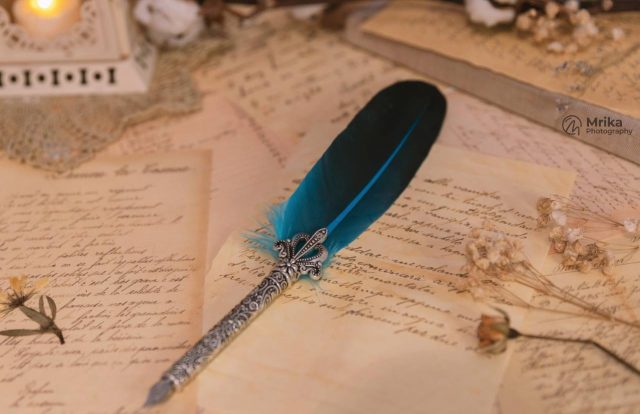In the age of instant messaging, text messages, and emails, the art of writing handwritten letters has become something of a dying custom. However, there is a growing movement that recognizes the value of sending a thoughtful, tangible message that is crafted with care and penmanship. So, let’s delve into the world of handwritten letters, exploring their importance in our digital age, and discovering what it takes to master this nostalgic and personal art form.
The Importance of Handwritten Letters
In today’s fast-paced world, taking the time to write a letter by hand shows thoughtfulness and dedication. Handwritten letters often evoke a sense of warmth, sincerity, and connectivity that digital correspondence can’t match. Sending a letter penned in your own handwriting creates a deeper, more personal connection with the recipient. It also adds a touch of elegance and tradition to your correspondence, making it perfect for special occasions, thank-you notes, and keepsakes.
Selecting the Perfect Stationery
One of the foundations of a quality handwritten letter is the stationery. To elevate your letter-writing experience, choose stationery that matches the tone and purpose of your message. Here are some factors to consider when selecting your stationery:
- Material: Aim for high-quality paper or cardstock with a smooth finish for a luxurious feel.
- Weight: A heavier weight adds a touch of elegance to your correspondence.
- Size: Choose a size appropriate for your message. A notecard is suitable for quick thank-you notes, while larger sheets are better for longer letters.
- Color: While classic white or ivory paper works for most occasions, you can opt for colored paper or finishes to make your letter more unique or festive.
When it comes to special occasions, such as weddings, consider using personalized stationery or elegant wedding invitations as a starting point for your handwritten notes. This will give your correspondence a remarkable touch, ensuring your message stands out in a meaningful way.
Picking the Perfect Pen and Ink
The pen you choose can significantly impact the appearance and overall feel of your handwritten letter. Some popular options for letter-writing pens include fountain, ballpoint, gel, and rollerball pens. Fountain pens offer a smooth writing experience and lend an air of elegance and sophistication to your letter. Ballpoint pens are a reliable and convenient option and are ideal for those who prefer a more casual writing experience. Known for their vibrant colors and smooth ink flow, gel pens can add a touch of flair to your correspondence. Meanwhile, rollerball pens combine the smoothness of a fountain pen with the ease of use of a ballpoint, making them a popular choice for letter writers.
The ink used in your letter can convey different emotions or set the mood for your correspondence. When choosing the perfect ink for your letter, consider factors like color, consistency, and drying time. Classic black or blue ink is ideal for professional or formal letters, while other colors can add a more playful or personal touch. A smooth, consistent ink flow helps produce sharp, clear letters for an elegant appearance. Some inks may require additional drying time to avoid smudging or bleeding through the paper. This could be particularly important if using a fountain pen.
Developing Your Penmanship
Skillful penmanship is essential to make a lasting impression with your handwritten letters. Practice by regularly writing letters or jotting down notes to get a feel for the pen, ink, and paper you have chosen. Pay attention to your letter spacing, size, and slant to create a cohesive, visually pleasing script. Don’t be afraid to develop your own unique style that showcases your personality.
Incorporating small decorative elements or accents can take your handwritten letter to the next level. Examples of flourishes include calligraphy, drawings, and embellishments. Learn basic calligraphy techniques and use them for headings, greetings, or signatures. A small illustration or doodle can add personality and charm to your letter, and you can also add wax seals, stickers, or washi tape to create a unique and memorable presentation.
Addressing and Mailing Your Letter
To ensure your letter reaches its intended recipient, don’t forget these essential mailing tips:
- Legibility: Write the recipient’s address clearly and accurately, following postal guidelines for your country.
- Return Address: Include your return address in case the letter cannot be delivered and needs to be returned to you.
- Postage: Make sure you know the correct postage amount so your letter arrives on time and without delay.
Embracing Slower and Mindful Communication
Writing handwritten letters encourages us to slow down, be present, and communicate with intention. This mindful approach to communication can foster deeper connections and better understanding between people. Try integrating letter writing into your routine, and watch how it enriches your relationships and transforms your overall communication skills.
Mastering the art of handwritten letters allows you to create personal and meaningful connections that digital correspondence often lacks. From choosing the perfect stationery, pen, and ink, to refining your penmanship, adding flourishes, and mailing with care, there’s a certain satisfaction that comes from pouring your heart out onto paper. So, pick up your pen, embrace this timeless tradition, and leave a lasting impression on your loved ones with the art of handwritten letters.

Speaks from heart, always too passionate and driven by emotions. Spins the words with kindness & sharpness, intriguing your ever-inscrutable minds.


